|
TRANSLATE THIS ARTICLE
Integral World: Exploring Theories of Everything
An independent forum for a critical discussion of the integral philosophy of Ken Wilber
 Brad Reynolds did graduate work at the California Institute of Integral Studies (CIIS) before leaving to study under Ken Wilber for a decade, and published two books reviewing Wilber's work: Embracing Reality: The Integral Vision of Ken Wilber (Tarcher, 2004), Where's Wilber At?: Ken Wilber's Integral Vision in the New Millennium (Paragon House, 2006) and God's Great Tradition of Global Wisdom: Guru Yoga-Satsang in the Integral Age (Bright Alliance, 2021). Visit: http://integralartandstudies.com Brad Reynolds did graduate work at the California Institute of Integral Studies (CIIS) before leaving to study under Ken Wilber for a decade, and published two books reviewing Wilber's work: Embracing Reality: The Integral Vision of Ken Wilber (Tarcher, 2004), Where's Wilber At?: Ken Wilber's Integral Vision in the New Millennium (Paragon House, 2006) and God's Great Tradition of Global Wisdom: Guru Yoga-Satsang in the Integral Age (Bright Alliance, 2021). Visit: http://integralartandstudies.com
The Miracle of “Light”Seeing with Integral Vision—Part 2Brad ReynoldsI would like to present these essays on Light—Seeing with Integral Vision—as a multimedia, intellectual-emotional experience, if possible (if you, the reader, will take the time). Thus I have inserted what I call “Mystic Music Movies” (compiled in the spirit of Fair Use) with contributions by many artists (and edited by your author). I hope the music (and talks) will evoke feelings and insights that may help serve the ingestion of the intellectual ideas being presented in these integral essays. Thank you for reading and watching—May we all See and Be the Light! Are you experienced?  Big-Bang Beginnings: The Birth of Light
Born before heaven and earth In the silence and the void, Standing alone and unchanging Ever present and in motion. Perhaps it is the Mother of the ten thousand things. I do not know its name. Call it Tao. For lack of a better word, I call it Great. — Lao Tzu (ca. 500 BCE) Tao Te Ching, Chapter 25 All of the energy-light in our current universe began with the so-called “Big Bang” or “Big Bloom” (in Brian Swimme's words), a flaring forth of a primeval “fireball” of immense energy that expands as space and time (or spacetime) to create all subatomic particles, all atoms, molecules, stars and suns, planets… bodies and us (and everything else). From the Big Bang all evolutionary process foam forth—but does all this happen by chance or divine plan? Aye, there is the rub. But that's another story. Without going into all the details here, we can say the Big Bang is the origin moment of our universe beginning in a massive burst of Light or Energy (somewhat like the Biblical God said). At first the expanding force was so powerful it was only one field, a single unified force of unimaginable energy, extremely hot, yet rapidly expanding and cooling from the origin point of infinity known as a “singularity,” where all mathematics break down and science finds existence immeasurable (just like the Buddhists say). 
Big Bang Timeline
Nevertheless, the Big Bang is not an explosion occurring somewhere in space, as the name implies. It is actually the creation of space and time itself, thus generating all the energy and matter that will ever exist and evolve as vast patterns of complexity unfold while spacetime continues expanding—Spirit-in-action, is one way to look at it. It's really impossible to imagine, for it's an event that can't be observed. The Big Bang, in other words, is a profound paradox—think about it—Something from Nothing? As one Awakened Adept explained: The “Big Bang” is not something that occurred in space (or in time). The “Big Bang” is the origin of space (and of time). To look at the “Big Bang” as an event in space (and in time) is already to look at it in egoic terms, and from a position after the event.”[1] Indeed, paradoxically, from every position we stand in today, we are standing at the center of our expanding universe as well as existing nearly fifteen billions years away from the center. When we look up at the stars in the night sky, we are actually witnessing the past as light takes time to travel to us. It is a mystery science was only able to untangle when Edwin Hubble (1889–1953), peering through the new large 100-inch Hooker telescope at Mt. Wilson in California, discovered that the universe is expanding (a fact even Einstein had difficulty accepting although his equations had predicted it). Cosmologist Brian Swimme, author of The Universe Story (1992), explained we consequently exist in “an omnicentric evolutionary universe,” as he further clarified: The birth of the universe means not only the birth of all the elementary particles of the universe and not only the birth of all the light and energy of the universe, it also means the birth of the space and time of the universe. There is not pre-existing Newtonian space into which the universe explodes forth. There is no external Newtonian timepiece clicking away outside the universe. Space and time erupt together with mass and energy in the primordial mystery of the universe's flaring forth.[2] After the Big Bang's initial split second (known as Planck time, i.e., 10-44 of a second, the shortest moment we know of), the four forces or interactions of Nature were united until they began breaking into the weak and strong nuclear forces, plus gravity and electromagnetic radiation. Obviously, the first fractions of a second after the Big Bang are extremely hard to comprehend and explain since they're impossible to replicate due to the extremely high energy (and ungodly high temperatures). For instance, the theory of “inflation” (happening about 10-34 second afterwards, that's a trillionth of a trillionth of a second) suggests that space swelled to such an enormous extent (going even faster than the speed of light) that it generated exotic “dark matter” that supposedly makes up 90% of all known matter (and gravity) in the entire universe. That's what modern science basically says. Dark matter is totally different than the ordinary matter experienced in our daily lives here on Earth, which makes it an even greater mystery (or hidden fact) in the halls of science. In fact, it may not be “matter” at all, some scientists suggest, but more like the interpenetrating aether the ancients had spoken about[3] (so no wonder an integral thinker like Joe Corbett could see dark “matter” as possibly being the “causal” realm of archetypal forms[4]). In other words, even with the power of light, there's still a lot of groping in the dark, and that matters. According to current unified field theories, as mentioned, since the first instant of the Big Bang's expansion was so hot and dense, so extreme and rapid, there was only one single force until a “spontaneous symmetry breaking” fractured into what is now known as the “Higgs field” (named after Peter Higgs of the University of Edinburgh, who first conceived the idea in 1964[5]). Symmetry breaking, or the fracturing of “Unbroken Light,”[6] is thought to occur through the agency of the Higgs Field as this vastly hot single force of plasma-heat cools into several different lower forces at low energy—like the way things are today. Then around one second, the four forces of Nature separated and emerged setting the stage for “nucleosynthesis,” the creation of subatomic particles, such as with protons and neutrons, that would later become the first real atoms (once things cooled down some more). By the end of the first three minutes, nucleosynthesis had birthed its first children, the two most abundant elements in the universe, Hydrogen and Helium. The rest, as they say, is “Big History.” We could say, therefore, this process of evolutionary creation is similar to what Adi Da Samraj has called the “breaking” or “fracturing” of the “Indivisible Oneness of Unbroken Light,” the fractalization of the whole into parts (i.e., the One into Many). This also involves the primordial split into subject-object dualism, thus eventually leading to our own separative sense of self-illusion (embodied as the self-contraction). This breaking of light generates the “Kosmos” (as Wilber says reviving the ancient Greek term) or the “Cosmic Mandala” (in Adi Da's words), a holarchy seen as concentric circles outlining the gross-subtle-causal domains of total existence. Such a universal view pictures a hierarchy of ontological levels (Being) combined with developmental state-stages in conscious awareness (Knowing): a spectrum of electromagnetism and consciousness evolution. 
Cosmic Mandala — Avatar Adi Da Samraj
gross (red-yellow) to subtle (blue) to causal (black) to Divine Light (star) Overall, this manifestation of existence is simply the Realm of Reality itself, what the Vajrayana Buddhists call Dharmadhatu, which includes both relative phenomena and Absolute Truth, or Tathata (the “Suchness” of Reality “as-It-IS”), another useful Buddhist term pointing to what is always already the case (see below). Wilber, as another example, calls this “Great Nest of Spirit” (an updated version of the “Great Chain of Being”) as being a “great morphogenetic field or developmental space—stretching from matter to mind to spirit—in which various potentials unfold into actuality,”[7] somewhat similar to Whitehead's “seamless coat of the universe,”[8] but manifesting as an evolving holarchy (or nested hierarchy) of light. The Eye of Science, of course, provides the details of this stupendous process (which will be revised with future science, no doubt, but only in more details since our current science seems sound). As Consciousness or the Light of God evolves into the relative universe, we can still see (and know) the True Light underlying all holons (or holarchy of “whole/parts”). This is when the Eye of Spirit is opened to seeing (and revealing) Real God as Reality Itself. The Kosmos, in other words, is not just the remnants of the Big Bang, but is the radiant energy of God's Light emerging from a point of infinite density expanding to infinity as the hierarchy of spacetime realms. In our current Genesis story, at one picosecond (10-12 of a second), as part of symmetry breaking the unified electroweak force broke or fractured into the weak nuclear and electromagnetic forces. This fracturing of the Higgs Field causes the masses of subatomic particles, including particles carrying forces of energy (such as light or photons), to start popping into existence. This fluctuation in the Higgs Field, for example, gives rise to the W and Z bosons (which bear the weak force), while photons mediate the electromagnetic force spiraling as massless wavicles extending over vast distances moving at light speeds (see below).[9] Again, without getting into the complex details, let's note this breaking of symmetry, soon after the Big Bang's initial energy output, provides all the “particles” or “stuff” making up our current universe, that is, once things cooled down some more. Still, it would take billions of years to make our planet Earth, and then millions of more years for mammalian and hominid evolution to finally create anatomically modern humans, such as our own human species. And now today, via light we are looking out into space to see back in time to understand our evolutionary Universe Story. Totally amazing when you think about it! This overview of the new physics is nicely summarized in The Shadows of Creation (1991), a classic text on particle physics: The history of the Universe from this earliest instant has been the saga of ever-growing asymmetry and increasing complexity. As space expanded and temperatures cooled, particles began collecting and structures started forming from this ultrahot, featureless plasma. Eventually clusters and galaxies, stars, planets, and even life itself emerged. In at least one corner where conditions were ideal, intelligent beings evolved to the point where they could begin to comprehend these fantastic origins. Above all else, the Big-Bang Universe is an evolutionary Universe, fraught with possibilities.[10] Yet why did this all happen? Spirit-in-action, the Integral Vision answers; fortunate confidence, science suggests. Thank God, I maintain. Within one second after the Flaring Forth, the temperatures of the universe fell to about 10 billion degrees (about a thousand times hotter than the core of the Sun), so subatomic particles—electrons, protons, neutrons, plus photons of light—could start coming into existence. They would go on to generate a Kosmos via the processes of cosmic and biological evolution. Yet, in this early era of Genesis, the fiery furnace of expanding plasma (composed mostly of quarks) still was too hot to make stable atoms or for light to fly free. The cosmic quantum soup, the initial unified state of the universe, would only later generate the nearly endless expanse of stars and galaxies, black holes and dark matter (as well as dark energy and other exotic theories proposed by modern scientists). It would still take vast eons of time for solar systems and planets to come into existence, then, finally, life… on Earth, a living blue pearl in a sea of light and darkness. But back to the Beginning: within a few minutes heavier nuclei formed by combining the first presence of neutrons and protons to produce the prototypes of the first gaseous elements; though still incomplete without electrons. It would take another quarter of a million years or so, expanding at the steady Hubble constant, for the universe to finally cool down to a few thousand degrees, which is, incidentally, the temperature of “Hell” or when brimstone melts.[11] Then, finally, electrons slowed down enough to be captured by the more ponderous nuclei floating around in the primordial plasma to form the gases of Hydrogen and Helium (with small traces of Lithium and Deuterium), the lightest elements in the Periodic Table, the first elements of existence. Hydrogen, the most abundant chemical substance in the Universe, is the simplest element with atomic number 1 (one neutron, one proton), which alone makes up 75% of all baryonic (or normal) mass (minus dark matter)—it is the fuel of stars powering the radiation of light. Prior to this moment (around 300,000 years after the Big Bang), however, light-photons were still trapped within the incandescent plasma (or photon-baryon fluid) of the early expanding universe. They were too busy interacting with the charged particles of the nucleus keeping everything bonded together in an opaque fog of extreme temperatures. However, once this era of “decoupling” took place, the subatomic particles became attached to the electrically neutral electrons so photons could finally break free to roam off in all directions flying towards infinity at the speed of light in an ocean of expanding darkness.[12] According to today's science, at this moment the universe became transparent and full of light or electromagnetic radiation. Space opened up so matter could begin forming en masse, under the pressure of gravity, until stars burst forth and galaxies could collect together to fill the expanding energy-vacuum creating the universe we know today… finally leading… to us… and whatever lies beyond. 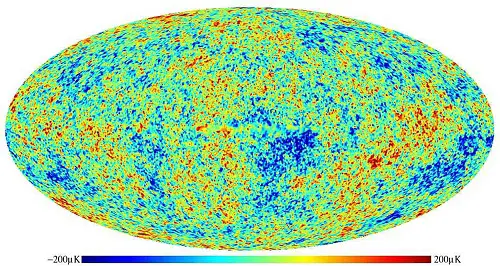
Cosmic Microwave Background Radiation (CMBR)
This explosion of light-photons from the primordial plasma became what is now called the “cosmic microwave background radiation” (CMB, CMBR), a predicted phenomenon confirmed in the 1960s (by Penzias and Wilson). What is seen as “snow” (or sparkling interference) on non-digital television screens proved the authenticity (and actuality) of the Big Bang event. Electromagnetic radiation (light) was no longer strong enough to break atoms apart nor to automatically be absorbed, so the Universe became transparent and was filled with light.[13] Finally, light was released to flow throughout the universe… and the rest, as they say, is history, big, big history. In another million years or so, galaxies would start to form, then in another billion and a half years, we see the Universe basically as we now know it. It would still take billions of years before evolution would finally create our human race. On other words, the Universe Story of science tells us some 13.7 billions year ago (according to the latest calculations), the evolution of our universe—and us—had begun… what a miracle! What a Divine Miracle! Eros-in-action or Spirit-Energy-in-action (as Wilber might say)… the Tao overflowing into “10,000 things” (as Lao Tzu says)… ☯ wu wei! Absolute Light fracturing into relative light, then and now. Science (as the Eye of Mind) provides the relative details; enlightened mysticism (as the Eye of Spirit) gives us the absolute reason and deeper meaning, IF we see the Divine Light for ourselves. What a miracle that matters!
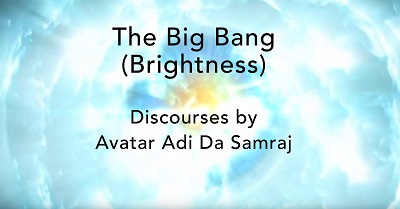
(video may not play everywhere due to copyright issues)
The Profound Paradox of PhotonsIn quantum mechanics, the electromagnetic force keeping electrons near atomic nuclei can be thought of as occurring through an exchange of photons. In this picture, an electron emits a photon, which is subsequently absorbed by one of the protons inside the nucleus, or vice versa. Swapping photons like this, again and again, the electron and nucleus remain in close contact with one another—two intimate trading partners in the subatomic economy. Photons are the “carriers” of the electromagnetic force that glues atoms together.[14] In our Kosmos, unlike any other holon (or whole/part), light is its own thing. Although quantum theory speaks of light as a particle, a photon, it's actually massless and thus has its own set of universal properties: it has no mass; it has no charge (neither positive or negative); it has no time, for clocks stop at the speed of light; it also has no space since space does not effect its travels, although, paradoxically, it takes time to travel through space (nearly 300,000 kilometers per second; that's super fast).[15] Light-photons are also involved in quantum entanglement, where independent particles seem to influence each other over long distances, forcing Erwin Schrödinger to conclude: “I would not call [entanglement] one but rather the characteristic trait of quantum mechanics. The one that enforces its entire departure from the classic [Newtonian] lines of thought.”[16] Light thus appears with qualities that can seem infinite and eternal, or certainly paradoxical, therefore, it is mysterious (or a miracle), even to science. The quanta of light cannot be spatially localized or described by any mechanical model due to its uncertainty and indeterminacy, yet its power is effective, bright, and far-reaching. The basic “unit” of light is called a photon—ancient Greek for “light” symbolized with g (the Greek letter gamma)—technically first named by Wolfers-Lewis in 1926 to identify the “particles” or forces creating electromagnetic energy. Photons (or light) are transmitted in whole units or packets, thus each is a quanta of action that apparently cannot be divided (first named by Einstein using Latin for “how much”). Paradoxically, light acts like both a wave and a particle, yet it is neither; it's a wave/particle or wavicle, yet as the perceptive science author-physicist Peter Russell explains: “As far as light itself is concerned, there is no duality, no paradox.”[17] Light truly defies normal imagination; indeed, uncertainty is its principle (as first articulated by Werner Heisenberg in 1927). Such entanglement and nonlocality of quanta of light makes it a paradoxical enigma, even for science and the power of mathematics. 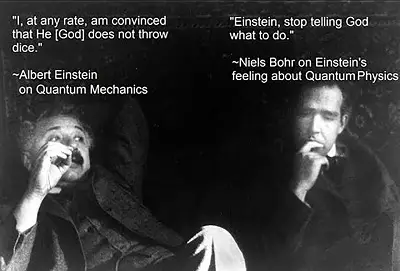
Einstein-Bohr Debates
This led to the EPR paradox (articulated by Einstein-Podolsky-Rosen), which describes the instantaneous communication of quantum entanglement, and thus had Einstein famously complaining about “a spooky action at a distance” It's still a conundrum not properly resolved, yet is an integral part of some of our most cutting-edge technologies, like quantum cryptography. The famous Bohr-Einstein debates revolved around this paradoxical issue for the rest of their lives, though they deeply admired each other's accomplishments; one at the quantum level, the other at the galactic level, respectively. Based on laboratory experiments, entanglement is how subatomic particles communicate with one another in a “nonlocal” manner, meaning light, as Laszlo explains, is “interlinked in a manner that transcends all permissible bounds of space and time.”[18] Obviously, this is a perplexing conundrum for modern physics and logical thought, since it involves an instantaneous transference of information which seems to move faster than the speed of light (meaning it's superluminal). This led, for example, to the thought experiment called “Schrödinger's Cat,” which is where a cat in a sealed box is sprayed with poisonous gas so it's either dead or alive but only if the container remains sealed. What it suggests is that there is a constant and almost instant interconnectivity with all other holons in some type of “holographic” field of reality. But what can a modern scientist say when light escapes logic and certainty? 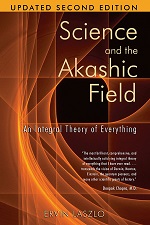
As a result, some post-postmodern physicists, such as Ervin Laszlo, propose an “integral vision” of the Kosmos that is constructed with a possible “fifth, superweak field” or “subtle energy field” that “will lead us to the discovery of the unity and consistency of the grand sweep of nature's evolution, as it builds from microscopic quanta to macroscopic organisms and, ultimately, to mind and consciousness.”[19] Laszlo suggests this field is similar to the “Akashic Field”[20] envisioned for millennia by Adepts from the East, thus it's an integration of Western science with Eastern wisdom. But who knows for sure, the scientist asks? The Eye of Mind will always struggle with what the Eye of Spirit reveals (and sees) as the true (and natural) condition of our Divine Kosmos. This means in our so-called material universe, from galaxy to shining galaxy, only light is absolute, not time nor space as proposed by Newton (and classical physics). Light is not a substantial material thing, so it cannot be reduced to physicality alone. Light is unique. The physicist Arthur Zajonc put it this way: “If one conceives of the universe as matter or its movement, light is the exception that shatters that prejudice. The nature of light cannot be reduced to matter or its motions; it is its own thing.”[21] Physicist Marcelo Gleiser further explains: “In Newtonian physics there is nothing special about the speed of light, apart from the fact it is very high [fast]. But according to Maxwell's theory, there is no such thing as an electromagnetic field at rest in space. Light is always in motion.”[22] Thus, in reality, there is no definitive way to define “light” for it is the movement of energy creating effects and fields of force, not solid particles (like people tend to picture it). Consequently, the Eye of Spirit is justified in seeing this energy-field-force as Spirit-Energy, for ultimately there is no real separation for everything is nondual: One-Many, God-Creation, Brahman-Maya, Nirvana-Samsara, i.e., when we really get down to it. “Matter,” in other words, from atoms to galaxies, stars to planets, from DNA to life, can all be seen as the “breaking” or “fracturing” or condensation of massless light or pure energy into the forms of mass and patterns making up the universe. The Eye of Spirit maintains that light is ultimately Consciousness, as all the Great Traditions declare—“Conscious Light” (in Adi Da's words).[23] Light, if seen truly with the Eye of Spirit, shows us an interesting and mysterious story of divine significance. From the scientific point of view, not knowing exactly where or how the photon appears and disappears in the Quantum Vacuum is beside the point, for it is only its effects or influences that matter to science. Thus, the American physicist Richard Feynman's purported conclusion: “Shut up and calculate.” Only results matter, reveals the Eye of Science, not philosophy (let alone mysticism). According to the new physics, the velocity of light is so deeply interwoven into the fabric of the universe that even science has to acknowledge its fundamental nature in creating all holons and natural processes (including those of evolution). Light is the energy of the universe, the force of electromagnetism acting on subatomic particles, which are themselves condensed energy vibrations responding to the energy-power of light. Quantum mechanics, the branch of physics that studies the forces or “quanta” of the subatomic world, shows us that light and matter are intimately interrelated, since the primordial energy-substance of the universe appears to be nothing but the actions created by these quanta of wave/particles or light. This gives us the unresolved paradox now known as “wave/particle duality,” as mentioned earlier, because light behaves like a particle (yet without mass), but at the same time, behaves like a continuous wave radiating in all directions. By seeing with the Eye of Spirit (integrated with the Eye of Science-Mind), the American-born Adept Adi Da suggests this paradoxical “duality” of light is united in the form of a spiraling helix: If a spiral-form is seen at its point of rotation (or its crossover joint), it is observable as a “particle”—and if the same spiral-form is seen with reference to its limbs of rotation (before or after its point of rotation, or its crossover joint), it is observable was a “wave”. So, also light is observable as both “particle” and “wave”—depending on which phase of its process is observed by attention (or “point of view”, or ego-“I”) in time and space.[24] 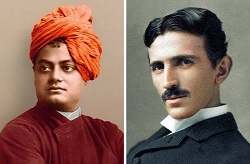 Swami Vivekananda & Nikola Tesla Even Spiritual Adepts, in other words, can understand the foundations of the universe without scientific degrees, unlike many proponents at “Integral” World suggest. By doing interior experiments guided by yoga and meditation, not just laboratory investigations, they still see the same universe composed of light (or energy, shakti). Hence the Integral Vision suggests we include all valid methods of knowledge accumulation (physical, mental, spiritual). As another example, Nikola Tesla (1856–1943), the maverick genius of electricity, was fascinated (and in agreement) with many of the insights he learned from Swami Vivekananda (1863–1902) in the early 1900s. Tesla consequently revived the idea of an Akasha field, as Laszlo explains: “Tesla wrote that this medium, a kind of force field, becomes matter when Prana, cosmic energy, acts on it; when the action ceases, matter vanishes and returns to Akasha.”[25] Although Einstein's mathematically elaborated four-dimensional spacetime is currently favored by modern physics, an aether-like “fifth, superweak” field has made a resurgence among some physicists, such as with David Bohm's “implicate-explicate” order, or with Laszlo's “Akashic Field” (but that too is another story). The final verdict, from science's view, however, is not conclusive. Even Einstein's perspective, if fully understood, shows some kind of “immaterial architecture of spacetime,” as Professor Zajonc explains: No longer should we imagine light piercing its way through space in straight lines, but rather as weaving through the curved structure of “spacetime.” Just as electricity and magnetism had been wedded together by the special theory of relativity, space and time likewise became inseparably linked in the reality of Einstein's universe. The pathways of light held a special place in the new theory, for while they curved, they still mapped out the shortest distances or “null geodesics” connecting one spacetime point to another. If the sun and starlight that fills all space could be made visible, we would see the glistening, mobile, sculptural architecture of the cosmos. Einstein even said that this immaterial architecture of spacetime could be understood as a kind of rehabilitated aether.[26] 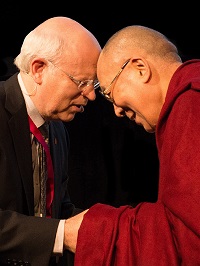 Arthur Zajonc with H.H. Dalai Lama, 2015 Modern physics, therefore, still lacks a truly accurate model of light, a fact not readily admitted by materialistic scientists (especially those who write popular books). It even stumped Einstein and Feynman, perhaps two of the smartest scientists of the twentieth-century. Light bends and refracts when traveling near heavy masses and through mediums (such as water), yet it still behaves according to the principles of relativity, as Einstein proved. In addition, since it always follows the path of least resistance, which is the most simple (and beautiful), then scientific theories also follow simplicity as being the most eloquent and accurate, as Feynman and Einstein often preached.[27] Overall, Zajonc concludes: “The actions of light can once again lead us to the heart of things,”[28] that is, whether viewed as a scientist or mystic. Consequently, after studying light for a lifetime, leading to his brilliant scientific revolutions of the early twentieth century, Professor Einstein confessed in 1951 (a few years before his death): All the fifty years of conscious brooding have brought me no closer to the answer to the question “What are light quanta?” Of course, today every rascal thinks he knows the answer, but he is deluding himself.[29] From the point of view of light, we discover, the photon travels no distance and takes no time to do so; it just IS. What Einstein and his colleagues (and successors) have done, then, is realize light is the only standard (or absolute) of the material or physical-oriented universe from which everything hangs together. As physicist-philosopher Peter Russell continues to point out: “There may not be many absolutes in the Universe, but the speed of light seems to be one. Light is somehow very special—completely different from everything else in the physical universe.”[30] The speed of light is the universal constant in our physical universe, the only unchanging aspect of a vast “material” universe that's constantly in flux making up the dancing table of elements (which makes up everything). Consequently, the photon concept in the Standard Model of particle physics has led to incredible advancements in technology and modern life, from medicine to computers to space travel to smart phones, and so on. It was Einstein himself who helped us to understand (or “see”) that light-energy, although massless, itself creates all mass, weight, density, matter, and even gravity (via mass bending spacetime). And, as we know, it's a very massive universe! Professor Gleiser explains the significance of Einstein's breakthrough insight: “Einstein suggested that the velocity of light in a vacuum (empty space) is not like any other velocity, but is special. It is the limiting velocity for causal processes in nature, that is, the fastest velocity anything can travel. More than that, it is independent of the velocity of its source.”[31] Science gives us a vision of light and relativity that approaches, if not replicates, the vision seen at the highest (and ultimate) levels of mysticism, yet without mathematics or particle accelerators! 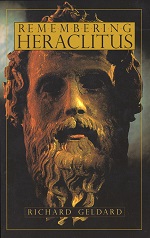
Metaphorically, we can say light is like the “ever-living fire” (Logos) or primordial substance flowing behind Heraclitus' constant sea of flux. As Heisenberg pointed out: “Modern physics in some way is extremely near to the doctrines of Heraclitus. If we replace the word 'fire' by the word 'energy' we can almost repeat his statements word for word from our modern point of view.”[32] That is no small matter! Light-Fire energizes the movement of atoms and binds their quantum particles, as well as radiating energy in all directions from stars and suns to create and sustain the heavier elements and molecules of life. Whether seeking in microcosmic or macrocosmic realms, we find light. Nothing material, or composed of mass and weight, can go the speed of light (670,616,629 miles per hour) since time stops (and distorts) and mass becomes weightless. Light presents us with a series of unfathomable paradoxes, no matter how we look at it: whether seen with the Eye of Nature (via the physical world), with the Eye of Science-Mind (via calculations and mathematics), or with the Eye of Spirit (via God's creative energy)—until we see (or know) nothing but Light. 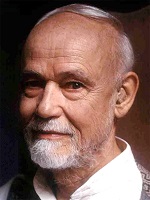 Huston Smith This leads the Integral Vision to know (or see) the entire vibrating Kosmic Mandala (with all of its realms of entangled existence, from gross to subtle to causal) as being nothing but the undulating patterns of indestructible, indivisible Light—the Spirit-Radiance of God Itself. As Professor Huston Smith, the beloved author of The World Religions eloquently (and wisely) stated: “Light is a universal metaphor for God, and what science has discovered about physical light helps us understand (more profoundly than even the spiritual giants of the past could do) why light is uniquely suited for that role.”[33] Science, in other words, with its understanding of the paradoxical (and mysterious) nature of relative light can also help guide us in our contemplation of Absolute Light. And because of this, we can tell a new Kosmos Story of Spirit-in-action, of the Divine Reality creating a universe as the play of light (interacting as photons), producing the mysterious power of energy without weight or mass that is fundamental to all mass, things, forms, and processes. Or, as we've heard before: “Massless existence is all forms/all forms are massless (in reality),” to paraphrase the Heart Sutra (from Mahayana Buddhism). Thus, Wilber rightly concludes our Universe Story really is “Spirit-in-action” being “pushed” or “moved” by Eros or Divine Love, which itself is Light-in-action displayed as the progressive unfolding of evolution (on all levels, in all “quadrants,” as all interiors and exteriors, etc.). It's not as far out as it seems, IF you see with all the Eyes of Knowing. It is a blessed Miracle, as far as I can see. Soon, may all be blessed to see (and know) the Light.
 NOTES[1] Adi Da Samraj, “Space-Time Is Love-Bliss” in Real God Is the Indivisible Oneness of Unbroken Light (2001), p. 216. [2] Brian Swimme, The Hidden Heart of the Cosmos (1996), p. 85 [italics in original]. [3] See: The Shadows of Creation: Dark Matter and the Structure of the Universe (1991) by Michael Riordan and David Schramm, foreword by Stephen Hawking, p. 6. [4] See: Joe Corbett, “Atman-Brahman: The Primordial Fractal” and “Transdarwinian Involution” on integralworld.net. [5] See: The Shadows of Creation: Dark Matter and the Structure of the Universe (1991) by Michael Riordan and David Schramm, foreword by Stephen Hawking, p. 165. This was recently confirmed with the discovery of the “Higgs boson” in 2012 at CERN, finding the so-called “God particle” as predicted by the Standard Model of particle physics. See: Beyond the God Particle (2013), by Christopher Hill and Leon Lederman. [6] See: Adi Da Samraj, Real God Is the Indivisible Oneness of Unbroken Light (1999, 2001). [7] Ken Wilber, Integral Psychology (2000), p. 12 [emphasis added]. [8] See: Alfred North Whitehead, Process and Reality (1929, 1978, 2010). [9] See: The Shadows of Creation: Dark Matter and the Structure of the Universe (1991) by Michael Riordan and David Schramm, foreword by Stephen Hawking, p. 165. [10] Michael Riordan and David Schramm, The Shadows of Creation: Dark Matter and the Structure of the Universe (1991), p. 18. [11] See: The Shadows of Creation: Dark Matter and the Structure of the Universe (1991) by Michael Riordan and David Schramm, foreword by Stephen Hawking, p. 19. [12] See: The Shadows of Creation: Dark Matter and the Structure of the Universe (1991) by Michael Riordan and David Schramm, foreword by Stephen Hawking, pp. 20-21. [13] See: The Search for Infinity (1995) by Gordon Fraser, Egil Lillestol, Inge Sellevag, with an Introduction by Stephen Hawking. [14] Michael Riordan and David Schramm, The Shadows of Creation: Dark Matter and the Structure of the Universe (1991), pp. 32-33. [15] See: Peter Russell, The White Hole in Time (1992), especially chapters “Light-A Timeless Realm” and “Now-In Light and Mind.” [16] Erwin Schrödinger quoted in Wikipedia entry “Quantum entanglement.” [17] Peter Russell, “Light-A Timeless Realm” from The White Hole In Time (Harper San Francisco, 1992), reprinted in MindField: A Quarterly Source Journal for Consciousness, Vol. 1, No. 2, Summer 1992, p. 34. [18] Ervin Laszlo, The Whispering Pond (1996), p. 67. [19] Ervin Laszlo, The Whispering Pond (1996), p. 153. [20] See: Science and the Akashic Field: An Integral Theory of Everything (2007, 2010) by Ervin Laszlo. [21] Arthur Zajonc, Catching the light (1993), p. 260. [22] Marcelo Gleiser, The Dancing Universe (1997), p. 200. [23] See: Adi Da Samraj, Real God Is the Indivisible Oneness of Unbroken Light (1999, 2001). [24] Adi Da Samraj, The Aletheon (2009), p. 1174. [25] Ervin Laszlo, Chapter 2: “The Rediscovery of the Akashic Field” in Science and the Reenchantment of the Cosmos (2006), p. 26. [26] Arthur Zajonc, Catching the Light (1993), p. 278; see Einstein's comments and quote. [27] See: Arthur Zajonc, (1993), pp. 280-281, for his discussion on Einstein and Feynman. [28] Arthur Zajonc, Catching the Light (1993), p. 81. [29] Albert Einstein quoted in Emil Wolf, “Einstein's Researchers on the Nature of Light,” Optics News, Vol. 5, No. 1 (Winter 1971), pp. 24-39. [30] Peter Russell, “Light-A Timeless Realm” from The White Hole In Time (Harper San Francisco, 1992), reprinted in MindField: A Quarterly Source Journal for Consciousness, Vol. 1, No. 2, Summer 1992, p. 30. [31] Marcelo Gleiser, The Dancing Universe (1997), p. 202. [32] Werner Heisenberg, Physics and Philosophy (1958), p. 63. [33] Huston Smith, Why Religion Matters (2001), p. 137 [emphasis added].
|